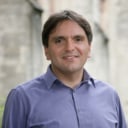Why open-source software is so powerful for physics: find out in the September 2021 issue of Physics World
01 Sep 2021 Matin Durrani
Open-source software has been critical to the famous image of a black hole – but also for many other areas of physics besides

Twenty-three thousand. That’s roughly how many people helped create the first ever image of a black hole, taken by the Event Horizon Telescope (EHT) in 2019.
Not all are formal members of the EHT collaboration – the vast majority are those who write, maintain and support the free and open-source software tools that the researchers used in their work.
But without the imaging software all those people had written, it would never have been possible to extract the famous image from the EHT data.
It was perhaps the most high-profile example of how free and open-source software is becoming a powerful tool in academic research, helping scientists to collaborate better and work smarter.
FROM PHYSOCSWORLD.COM 30/1/2022
In the September 2021 issue of Physics World, which is now out in print and digital formats, Achintya Rao investigates how such software is being used in physics research, and its role in the wider open-science movement.
If you’re a member of the Institute of Physics, you can read the whole of Physics World magazine every month via our digital apps for iOS, Android and Web browsers. Let us know what you think about the issue on Twitter, Facebook or by e-mailing us at pwld@ioppublishing.org.
For the record, here’s a run-down of what else is in the issue.
• Steven Weinberg: a legend is lost – By unifying the electromagnetic and weak forces, Steven Weinberg was vital to the formation of the Standard Model of particle physics. Michael Banks looks back at a giant of theoretical physics
• John Enderby: a passion for physics and publishing – Michael Banks joins the tributes to Sir John Enderby, the physicist and former chief scientific adviser to IOP Publishing, who died last month aged 90
• Exploring other worlds – Ling Xin talks to Su Yan from the National Astronomical Observatories of China, Chinese Academy of Sciences, about China’s rise in lunar science
• The wonder of Weinberg – Matin Durrani recalls his brushes with Steven Weinberg, was probably the greatest theorist of his age
• Where did all the calculus go? – Niki Bell argues that mathematics A-level could be reformed so that it does more to support physics students
• Competitive instincts – Physicists are competitive, but that doesn’t make them cutthroat, argues Robert P Crease
• Crossing the valley – In his third article on funding hi-tech firms, James McKenzie looks at recent initiatives to help them jump over the “valley of death”
• Standing on the shoulders of programmers – Free and open-source software is growing to be a powerful tool in academic research, helping scientists to collaborate better and work smarter. Achintya Rao investigates how such software is being used in physics research, and its role in the wider open-science movement
• Imaging metabolism in action – From improving the sensitivity of ion sources to boosting image resolution, Felicia Green and Anna Simmonds unveil the ambitious biological mass spectrometry programme at the Rosalind Franklin Institute to image molecular interactions in tissues
• The enduring mystery of the solar corona – Physicists have long known that the Sun’s magnetic fields make its corona much hotter than the surface of the star itself. But how – and why – those fields transport and deposit their energy is still a mystery, as Philip G Judge explainsREAD MORE

• Keeping nuclear secrets – Margaret Harris reviews Restricted Data: the History of Nuclear Secrecy in the United States by Alex Wellerstein
• Flights of fancy, feet on the ground – Philip Moriarty reviews Fear of a Black Universe: an Outsider’s Guide to the Future of Physics by Stephon Alexander
• Physics for biological breakthroughs – The European Molecular Biology Laboratory is a highly multidisciplinary place, employing people from across all scientific fields. Laura Hiscott speaks to Wolfgang Huber, a physicist at the lab who uses his mathematical skills to contribute to the life sciences
• Ask me Anything – Careers advice from Joanne O’Meara, professor of physics at the University of Guelph, Ontario, Canada
•A demon of a puzzle – In 1871 James Clerk Maxwell proposed a puzzle now known as “Maxwell’s Demon” in his book Theory of Heat. We celebrate its 150th anniversary in this thermodynamics-themed cryptic crossword compiled by Ian Randall

Matin Durrani is editor-in-chief of Physics World magazine
Δεν υπάρχουν σχόλια:
Δημοσίευση σχολίου